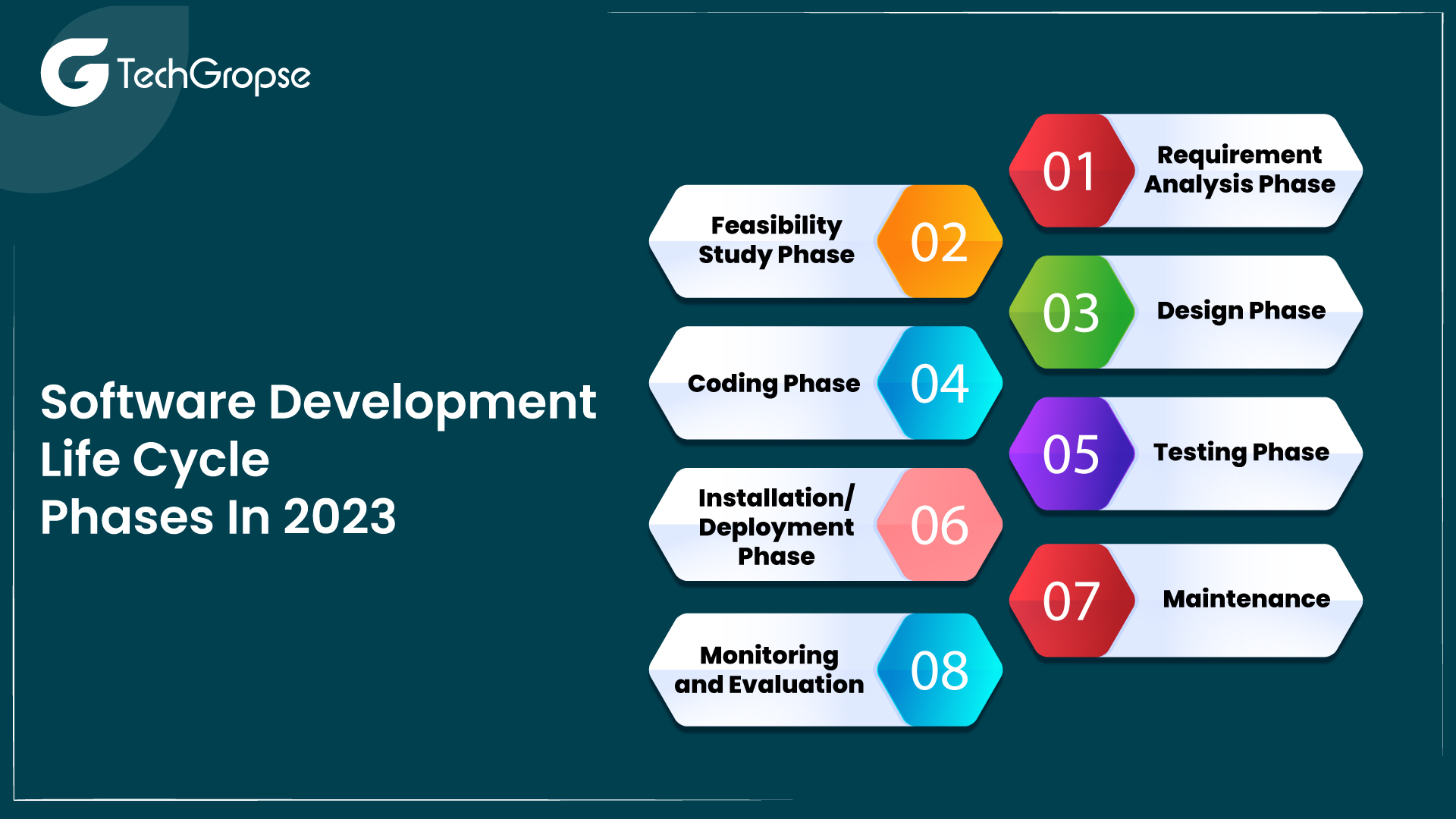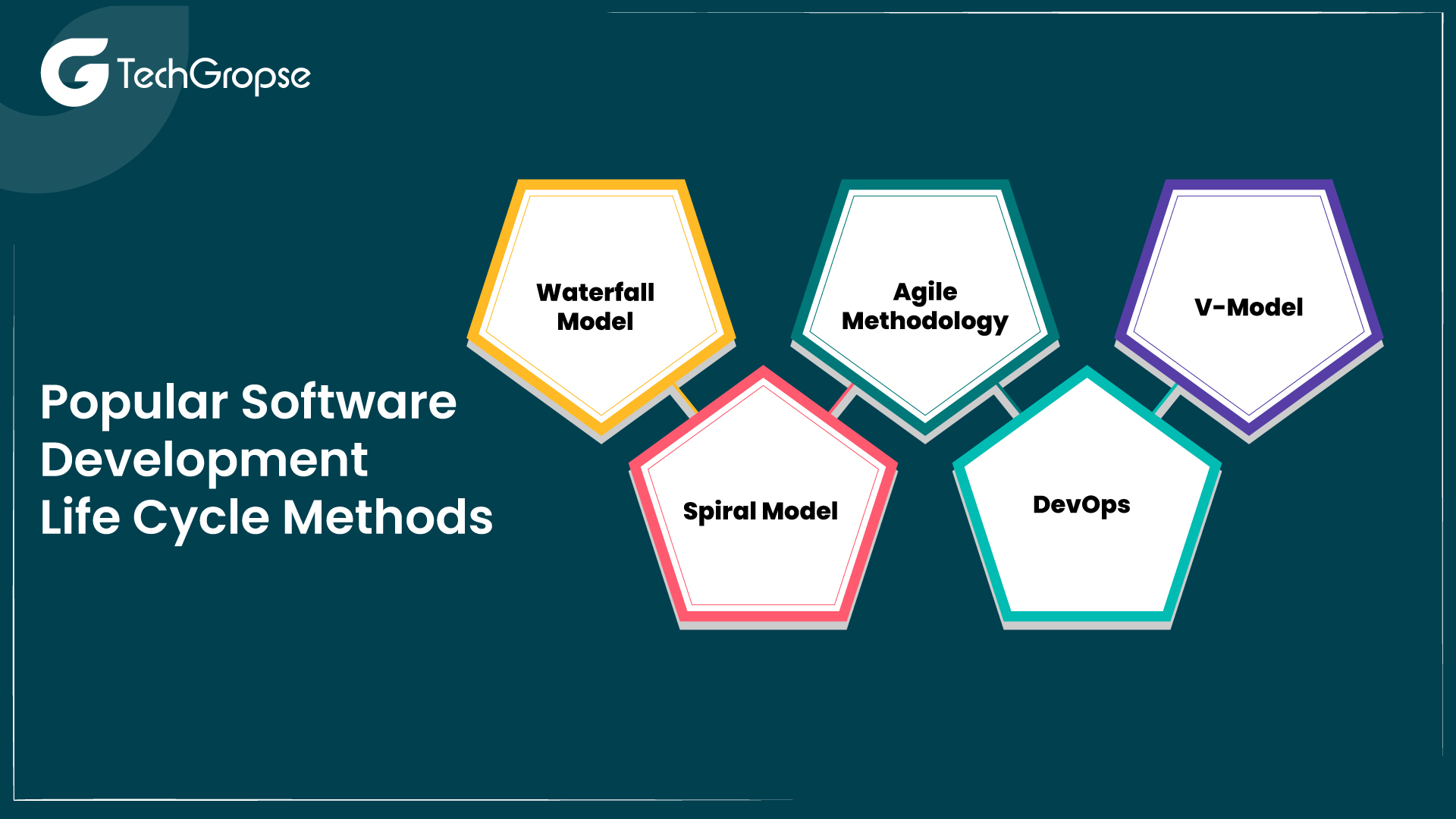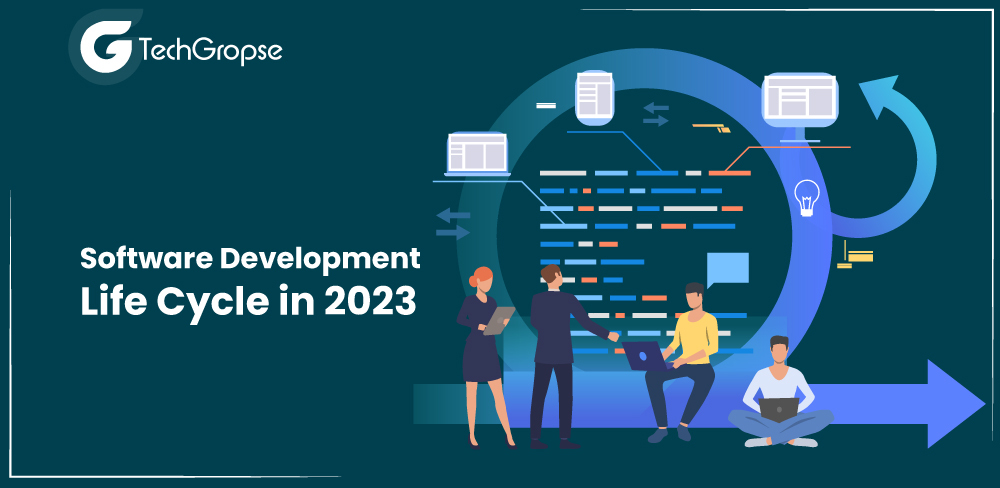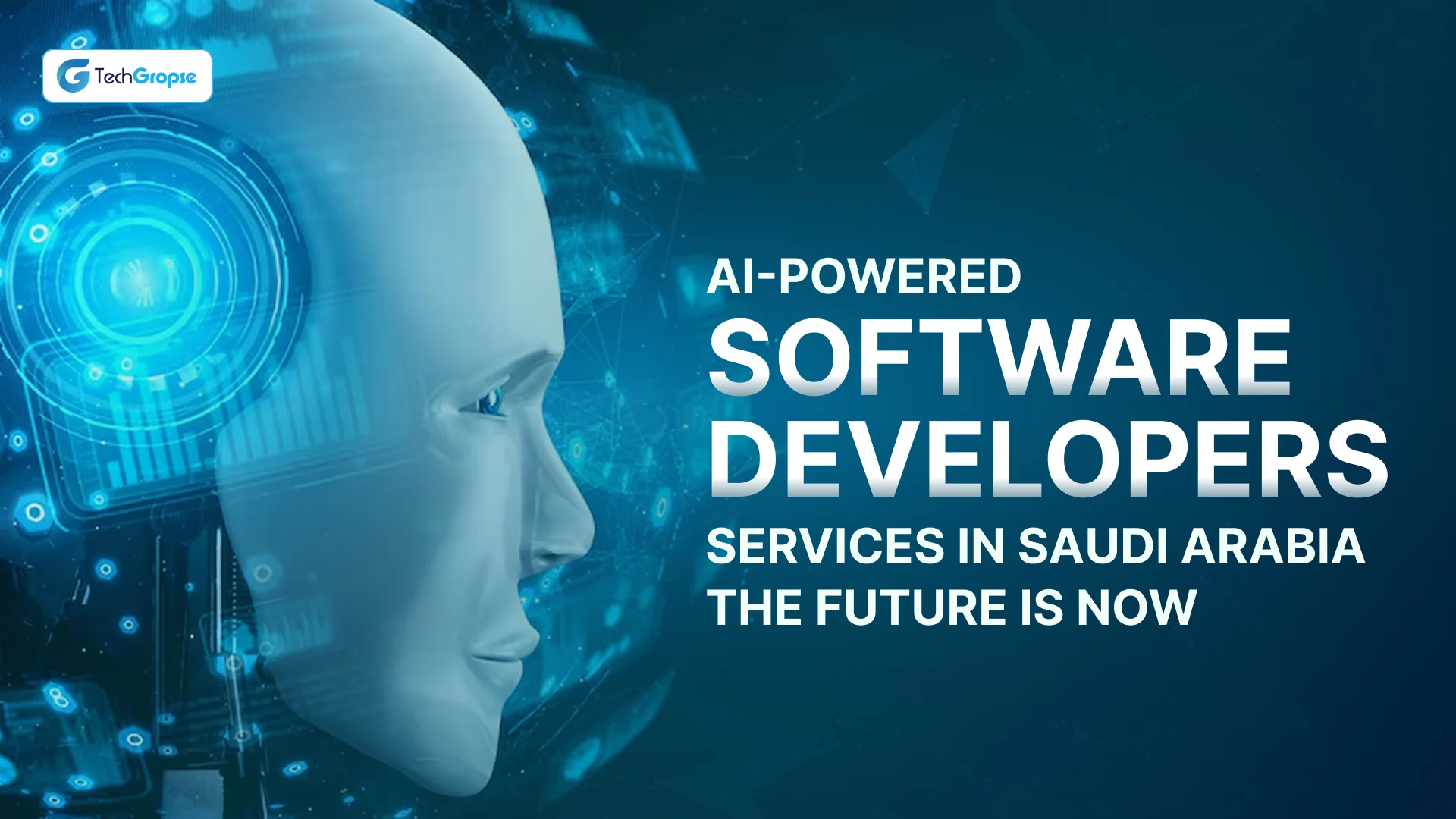In the world of technology, change is the only constant. As we embark on the journey through 2023, the Software Development Life Cycle (SDLC) stands at a crossroads of transformation and creation like never before.
The traditional paradigms that once described software development are giving way to a new age, shaped by emerging technologies, growing customer demands, and a relentless pursuit of excellence and efficiency.
The field of software development is always evolving, driven by modern technologies and changing market demands. SDLC serves as a methodical approach to creating high-quality software, encompassing different phases and methodologies.
Join us on this journey to gain valuable insights into the future of SDLC and how it shapes the software development landscape.
What is Software Development Life Cycle
In 2023, SDLC continues to be the backbone of the software development process, guiding teams through different stages to ensure reliable and efficient software delivery.
The software development lifecycle is like a roadmap that reflects all the steps of making a software project. It starts with careful planning and goes all the way to maintenance. There are various ways to do this process, and every way has its own activities and tasks.
Developing software is a big job that requires a lot of planning. First, you have to figure out what the project needs and how to make it happen. Then, you have to actually make it and get it ready to use.
But the work doesn’t stop there!
After the software is done, the developers have to keep taking care of it to make sure it keeps working well.
The software development lifecycle is essential because it helps with planning, scheduling, and knowing what needs to be done at every step. That’s why it’s divided into various phases.
Market Statics of Software Development
Now software development plays an important role in our daily lives. Everyone, from regular peeps to software development company and even new businesses, uses all types of software to get things done in an effective way.
Enterprise software development is gonna blow up in 2023, even with all the craziness from COVID-19. As per the Statista report, people are gonna spend about $700 billion on enterprise software development in 2023.
Importance of SDLC in Modern Software Development
We all follow a process to execute anything properly, whether it is building a house or making software. For example, if an architect has to make a house, he will first understand the needs of the user and then design and execute it with proper planning. The same concept follows in software development.
SDLC helps streamline the development process, allowing teams to work smoothly and deliver software that meets user needs. By following the SDLC, organizations can minimize risks, enhance efficiency, and ensure that the final outcome fulfills quality standards.
Here are the essential points highlighting the importance of the Software Development Life Cycle in modern software development in an easy format:
| Aspect | Description |
| Structure | Delivers a structured framework for software development. |
| Quality Assurance | Ensures high-quality software with complete testing and defect identification. |
| Risk Management | Helps determine and mitigate risks early in the process. |
| Efficient Resource Use | Prevents resource underutilization or overallocation. |
| Customer Focus | Modern SDLC processes prioritize customer feedback and collaboration. |
| Adaptability | Agile SDLC models allow for flexibility in a quickly changing landscape. |
| Cost Control | Helps handles budgets by identifying issues before they become costly. |
| Documentation | Promotes complete documentation for future reference. |
| Collaboration | Facilitates cross-functional team collaboration. |
| Security and Compliance | Include compliance and security checks. |
| Predictability | Sets clear milestones and timelines for predictability. |
| Continuous Improvement | Fosters a culture of learning and process improvement. |
| Scalability | Can be tailored for projects of different complexities and sizes. |
Software Development Life Cycle Phases In 2023

The Software Development Life Cycle consists of certain well-defined phases, each with its own set of objectives and activities.
These phases provide a structured method for software development, ensuring that projects are completed efficiently and with high quality.
Here are the specific phases of the SDLC:
1: Requirement Analysis Phase
2: Feasibility Study Phase
3: Design Phase
4: Coding Phase
5: Testing Phase
6: Installation/Deployment Phase
7: Maintenance
8: Monitoring and Evaluation
Phase 1: Requirement Analysis
The first phase is requirement analysis which is a vital phase in software development. It involves collecting, documenting, and analyzing the requirements and expectations of stakeholders for a software project. Effective requirement analysis is the foundation for a successful development process It also helps to reduce the risk of scope and costly changes later in the project lifecycle.
- Objective: Gather detailed needs and analyze them thoroughly.
- Activities: Interview, make use cases create user stories and document requirements.
The How: The software engineering task is bridging the gap between system requirements engineering and software design.
Orthogonal Views: Provides software designer with a model of:
- system information (static view)
- function (functional view)
- behavior (dynamic view)
Phase 2: Feasibility Study
A feasibility study is the second step in the software development process. It serves as a test to determine if the proposed system is workable, provides user needs, uses resources effectively, and is cost-effective. This evaluation is essential when assessing the feasibility of an idea, helping to gauge the practicality and viability of the software solution.
The primary goal of a feasibility study is to ascertain whether the software, once developed, will be embraced by end-users, adaptable to potential changes, and compliant with established standards.
The key objectives of a feasibility study are as follows:
- Investigate Organizational Requirements: Determine if the software aligns with the organization’s needs and objectives.
- Assess Technological Feasibility: Evaluate if the software can be developed using existing technology, within the specified budget and timeframe.
- Consider Integration: Determine if the software can seamlessly integrate with other existing systems and software.
Types of Feasibility Study
| Feasibility Type | Purpose | Focus |
| Economic Feasibility | To decide if the software will generate financial gains. | Evaluates costs and benefits, including development expenses and potential long-term organizational gains. |
| Operational Feasibility | To assess if the software will work effectively in practice. | Analyzes user requirements, acceptance of the software solution, user adaptability, and organizational satisfaction. |
| Technical Feasibility | To evaluate if the required technology and resources are available. | Considers technical skills, stability of chosen technology, and the presence of a user community for support. |
| Organizational Feasibility | To check if the software aligns with the organization’s objectives. | Analyzes whether the proposed system is consistent with the organization’s strategic goals. |
| Social Feasibility | To assess social implications and acceptance. | Considers whether the system solves problems without causing social issues and if it is acceptable to society. |
Phase 3: UI/UX Design
The UI/UX design is a vital step in software development. User Interface (UI) design focuses on creating an aesthetically pleasing and reflexive visual layout, while User Experience (UX) design ensures a seamless and user-friendly interaction.
This phase involves wireframing, prototyping, and usability testing to refine the software’s look and feel. A well-executed UI/UX design phase improves accessibility, user satisfaction, and the overall success of the software by aligning it with user needs and expectations.
- Objective: Plan the software architecture and system design.
- Activities: Create architectural diagrams, design the user interface (UI), and prepare data models.
During the Design Phase, several important elements are addressed to ensure the success of a software project.
- Selecting the Right Database Management System (DBMS)objectives
- Defining System Security Standards
- User Interface (UI) Design
- Data Capture Requirements
- Standards for Printed Report Production
- System Navigation Methods
Phase 4: Software Development & Coding
Software development and coding are vital parts of creating software applications. Development involves planning, designing, and creating software, on the other hand, coding is the process of translating design into programming languages.
You can hire dedicated developers to write code to make functional and efficient software that satisfies specific user requirements and business objectives.
- Objective: Convert the design into actual code.
- Activities: Write, test, and review code following coding standards and best practices.
Related reading: how much does Custom Software Development cost
Here are the important considerations for the Software Development and Coding phase presented in simple points:
- Version Control: Use version control systems to monitor changes and manage code collaboratively.
- Select the Right Tools: Select carefully development tools that fit modification, debugging, coding, and design needs.
- Establish Standards: Describe coding standards and conventions before starting to ensure consistency, especially in multi-developer environments.
- Include Comments: Write informative comments in the code to explain the logic and functionality for the use of other developers.
- Regular Team Meetings: Conduct frequent team meetings to detect and address bugs before, ensuring a high-quality product and code.
Phase 5: Software Testing
This step is a critical phase in software development that ensures the quality, functionality, and reliability of a software product. It involves systematically evaluating the software to determine errors, defects, and vulnerabilities.
Testing methods range from unit and integration testing to system and user acceptance testing. Effective testing allows detect and rectify issues early, leading to a more robust and user-friendly software application while reducing the risk of post-launch problems.
- Objective: Verify that the software satisfies the specified needs and functions correctly.
- Activities: Conduct unit testing, create test cases, system testing, integration testing, and user acceptance testing (UAT).
Phase 6: Installation/Deployment Phase
The Installation/deployment phase is the stage in software development where the fully developed software is prepared for deployment to production environments.
It involves many activities such as databases, configuring servers, and networks, and installing and configuring the software on target systems.
This phase ensures that the software functions perfectly in the intended environment, and users can access it seamlessly. It is a crucial step to make the software operational for end-users.
- Objective: Deploy the software to the production environment.
- Activities: Prepare for production, such as configuration, data migration, and rollout to end-users.
Phase 7: Maintenance & Support
It is a post-development phase in software lifecycle management. It involves ongoing activities to ensure software continues to perform efficiently and effectively.
This phase contains updates, security patches, bug fixes, and user support. The goal is to improve software security, reliability, and performance while managing changing user needs.
Regular maintenance and strong support are vital to develop the software’s lifespan and provide users with a reliable and growing solution.
- Objective: Ensure security, ongoing performance, and usability.
- Activities: Apply patches, address issues, and implement updates as needed throughout the software’s lifecycle.
Phase 8: Monitoring and Evaluation
It involves collecting and exploring data to measure progress, identify areas for progress, and ensure goals are met. This process helps organizations allocate resources efficiently, make informed decisions, and adapt strategies as needed.
In software development, it ensures that software applications satisfy quality standards and user expectations by constantly assessing their performance and usability.
- Objective: Constantly assess the software’s performance and collect user feedback.
- Activities: Collect user feedback, monitor system performance, and make advancements based on data and user insights.
Popular Software Development Life Cycle Methods

Software development life cycle methods are always changing and getting better. The secure software development life cycle all started with the waterfall model, but now there are various models to choose from. Smart software development teams take the best parts from multiple models and make the latest and improved ones.
Now, let’s talk about some of the most popular software development methods and what makes each one special.
1. Waterfall Model
- Description: The Waterfall model is a sequential and linear approach to software development. All phases like requirements, design, development, testing, and maintenance, must be completed before moving to the next.
- Suitable For: Well-defined projects with stable essentials.
- Advantages: Well-structured, clear documentation, and easy to manage.
- Disadvantages: Limited flexibility for changing requirements.
2. Agile Methodology
- Description: Agile software development life cycle is an iterative and collaborative approach that emphasizes flexibility and customer feedback. It breaks development into incremental iterations, small, with regular releases.
- Suitable For: Projects with varying or growing requirements.
- Advantages: Adaptable, customer-centric, encourages collaboration.
- Disadvantages: This may need frequent adjustments, and can be challenging for extensive projects.
3. V-Model
- Description: The V-Model, or Validation and Verification Model, is a systematic and structured approach to software development. It highlights the importance of testing and validation at each corresponding phase of development.
- Suitable For: Projects with well-defined needs and an effective emphasis on validation and testing.
- Advantages: Offers traceable and clear documentation, helps determine defects early in the process, and ensures a high level of quality and reliability.
- Disadvantages: Can be less flexible to changing needs compared to Agile approaches, and may outcome in longer development timelines because of its sequential nature.
4. Spiral Model
- Description: A risk-driven model that combines iterative development with risk management and assessment. Every iteration such as risk analysis, planning, engineering, and evaluation.
- Suitable For: Complicated projects with growing requirements and high risks.
- Advantages: Strong focus on accommodating changes, and risk management.
- Disadvantages: Resource-intensive and complex.
5. DevOps
- Description: DevOps is a culture and set of practices that emphasize collaboration between operations and development teams. It shortens development cycles, automates processes, and enhances software quality.
- Suitable For: Organizations seeking faster and more reliable software delivery.
- Advantages: Enhances collaboration, accelerates development, and enhances software stability.
- Disadvantages: Requires process changes and culture.
Examples of the software development life cycle
The below examples show how prominent software products benefit from SDLC processes to deliver improved usability, functionality, and performance, meeting the evolving demands of their user bases.
1. Google Chrome
Google Chrome, a globally praised web browser celebrated for its reliability, speed, and security, follows a highly structured SDLC process that comprises numerous phases of strict testing and feedback collection. One of Google’s primary objectives is to improve user experience by smoothly integrating app extensions, providing users with added functionalities without the need to leave the browser.
2. Microsoft 365
Microsoft 365, a renowned productivity software suite including applications such as PowerPoint, Word, Excel, and Outlook, adheres to a well-structured SDLC process. This amazing process encompasses detailed project planning, design, coding, thorough testing, and seamless deployment.
3. Adobe Photoshop
Adobe Photoshop, the industry-standard image editing software, utilizes an iterative SDLC process. This methodology revolves around constant testing and a keen focus on collecting customer feedback. Such an approach allows Adobe to always deliver quality upgrades that address specific pain points and demands of designers, photographers, and digital artists.
4. Slack
Slack is a well-known team collaboration tool, that adheres to an Agile SDLC process that prioritizes continuous testing and ongoing customer feedback. Agile, renowned for its focus on iterative development and close collaboration between developers and stakeholders, plays a pivotal role in Slack’s software development strategy.
Related reading: how much does Custom Software Development cost
Conclusion: Embracing the Evolving SDLC Landscape in 2023
The Software Development Life Cycle in 2023 offers exciting opportunities and challenges for software development teams. By staying up-to-date on appearing trends, harnessing the power of evolving technologies, and adopting agile practices, organizations can streamline their development processes and provide high-quality software products.
As we guide through the ever-changing software development landscape, embracing the principles of SDLC will be essential for success.
By continually adapting, learning, and embracing innovation, software development teams can thrive in the dynamic world of technology and provide exceptional software solutions in 2023 and beyond.
FAQ: Software Development Life Cycle in 2023
1. What is the importance of SDLC in software development?
SDLC provides a structured framework that allows software development teams to plan, design, develop, test, and deploy software applications. It ensures a methodical approach to development, resulting in higher quality products, enhanced project management, and improved collaboration among team members.
2. How does SDLC grow in 2023?
In 2023, SDLC is predicted to witness some advancements and changes advancements. This includes the integration of emerging technologies such as machine learning, artificial intelligence, and blockchain. Additionally, there will be a more wonderful emphasis on agile methodologies and the adoption of DevOps practices to facilitate faster development cycles and enhance collaboration between development and operations teams.
3. What are the challenges faced in implementing SDLC?
Implementing SDLC can bring about challenges like managing project scope, ensuring effective communication among team members, addressing security concerns, and keeping up with evolving technologies.
However, leveraging automation tools, adopting best practices, and fostering a culture of collaboration can help overcome these challenges and ensure the successful implementation of SDLC.










